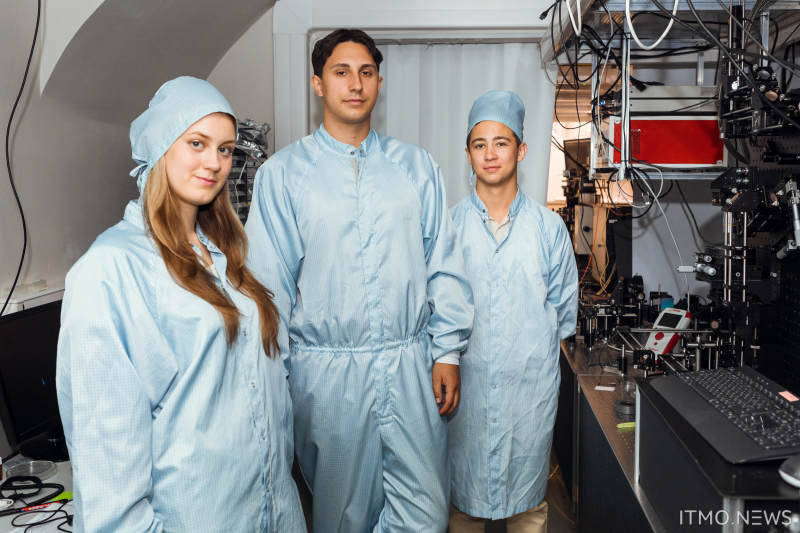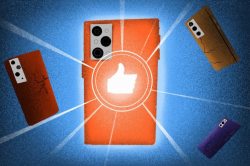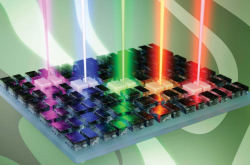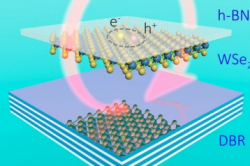The new technology is based on laser ablation – a process, during which a silicon film is transferred to glass via a laser pulse. The general shape of the label can be modified beforehand to make it look like a brand logo, but it’s impossible to program the silicon nanoparticles, so each image is absolutely unique. If compared to other substances, silicon is accessible, resistant to external influences, and has a lot of color options. It can also be placed on a wide range of materials.
“Imagine there’s some sand in your hand and you decide to pour it onto a plate. Eventually, you’ll end up with a unique sand ornament that will be impossible to replicate on another plate. The same concept lies at the core of our technology, too, but instead of sand, there’s silicon. The laser influences the silicon film, which leads to the extraction of nanoparticles that form a random texture. The resulting image looks like a constellation of multicolored stars,” says Pavel Kustov, a PhD student at the School of Physics and Engineering and the paper’s first author.
Each silicon particle contains unique data, such as coordinates, color, and structure (crystallinity percentage). This information is encrypted and stored in a database. The coordinates are responsible for the shape of the label and ensure the first level of protection. Chromatic coordinates influence the color and add another anti-counterfeiting layer. Finally, the crystallinity percentage represents how chaotic or ordered the atoms in each particle are, thus making it even safer.
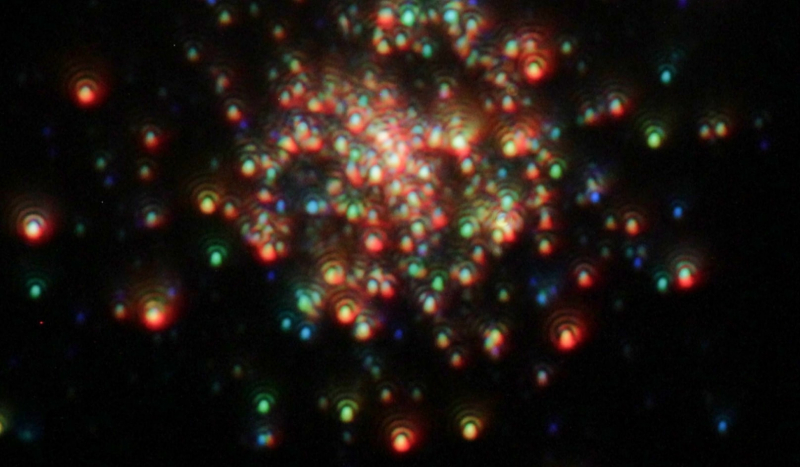
Anti-counterfeiting silicon labels. ACS Applied Nano Materials / pubs.acs.org
“Our labels are invisible to the naked eye. In order to see them and check their authenticity, you need to take a picture using a zoom lens or a microscope and upload it into a special program, which clusters and simplifies the picture using machine learning and computer vision so that it starts to look kind of like a coloring book where every digit stands for a color. Then it’s compared to the information from the database. If all the parameters correspond to each other, the program will conclude that the product is authentic. Otherwise, it’s a forgery,” says Elena Petrova, a student at the School of Physics and Engineering and the paper’s co-author.
According to the project’s authors, such labels will be useful for manufacturers of luxury and limited products, such as drugs, cars, jewelry, and musical instruments.
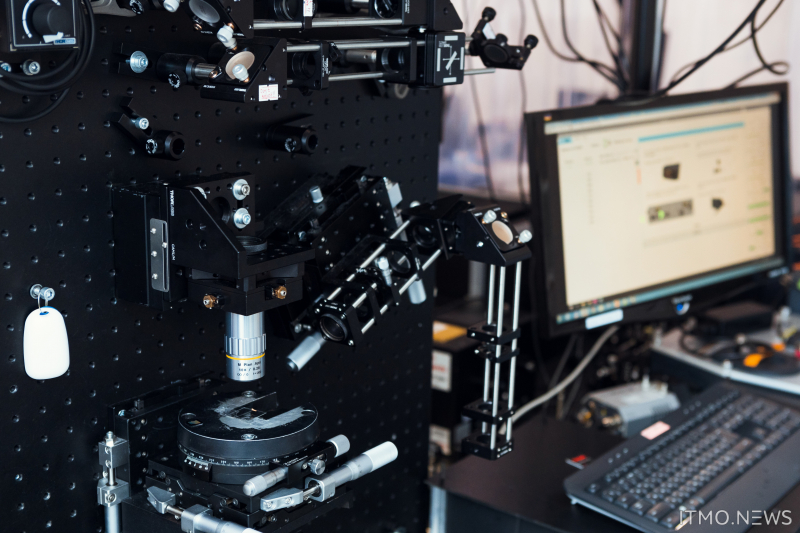
The PHAROS laser system used to create the labels. Photo by Dmitry Grigoryev, ITMO.NEWS
“There are few studies that suggest accessible and easily implemented technologies for the creation of unclonable labels. The laser ablation method and silicon haven’t been applied in this field before. As it turned out, they make up a relatively simple way to ensure the maximum level of protection. Our next step is making the labels more flexible and increasing the number of materials they can be put on,” concludes Martin Sandomirskii, a student at the School of Physics and Engineering and the paper’s co-author.
Reference: Pavel Kustov, Elena Petrova, Mikhail Nazarov, Almaz Gilmullin, Martin Sandomirskii, Ekaterina Ponkratova, Vitaly Yaroshenko, Eduard Ageev, Dmitry Zuev. Mie-Resonant Silicon Nanoparticles for Physically Unclonable Anti-Counterfeiting Labels. ACS Applied Nano Materials, 2022.
